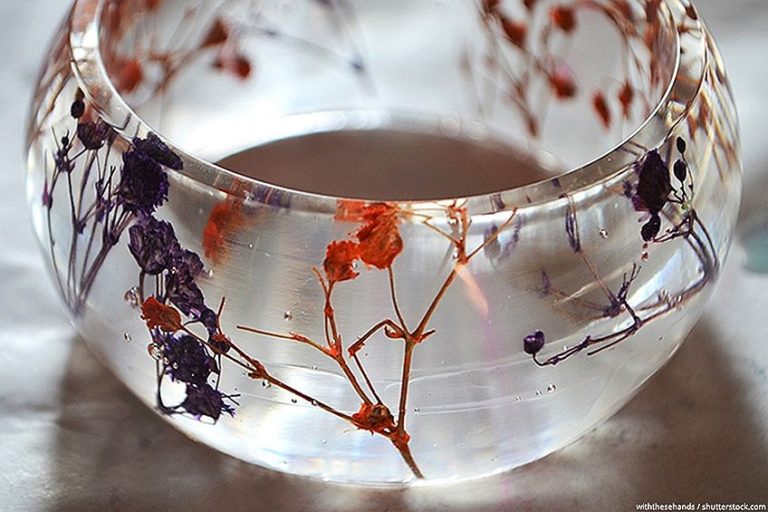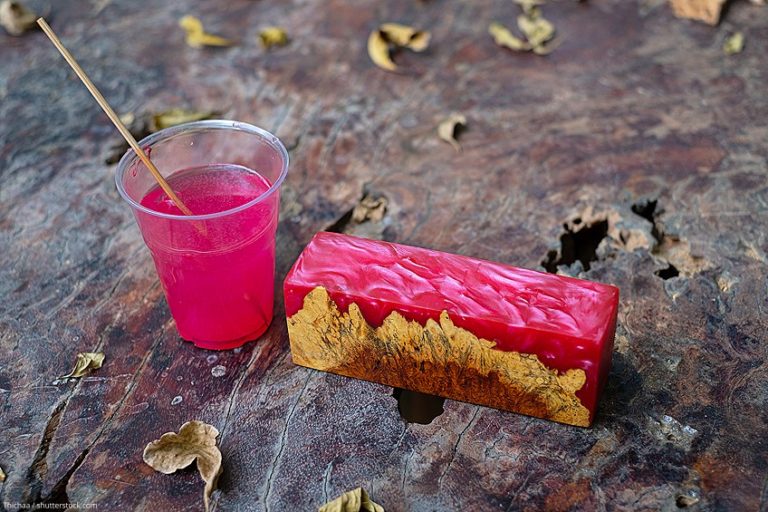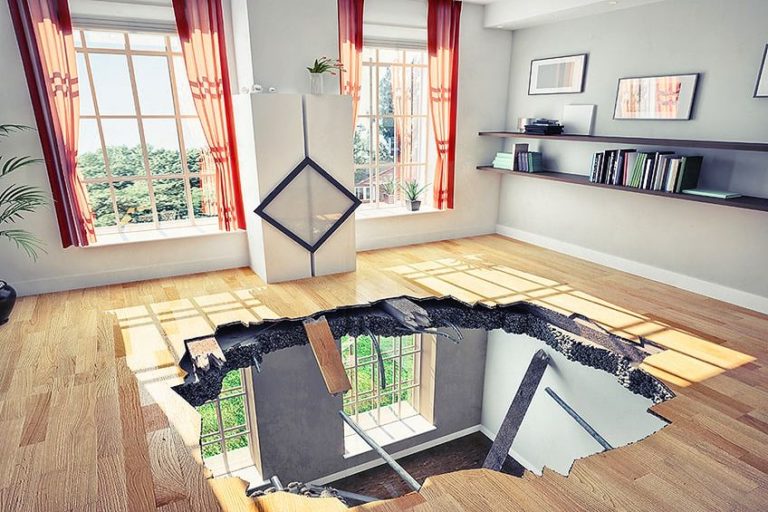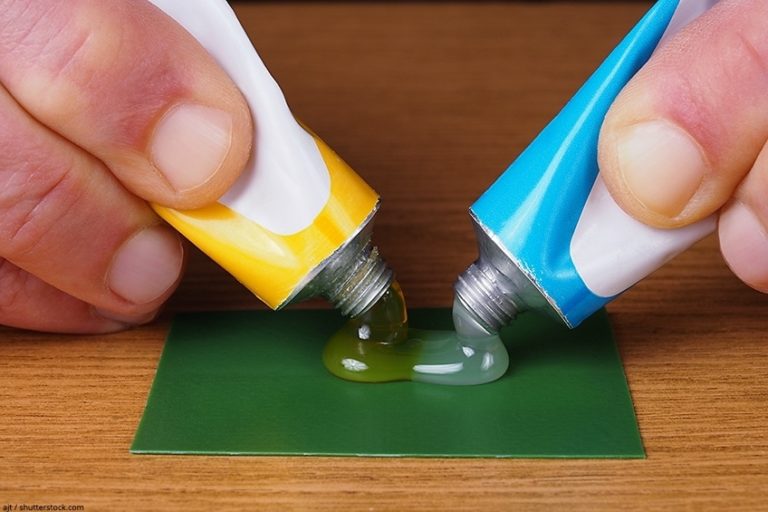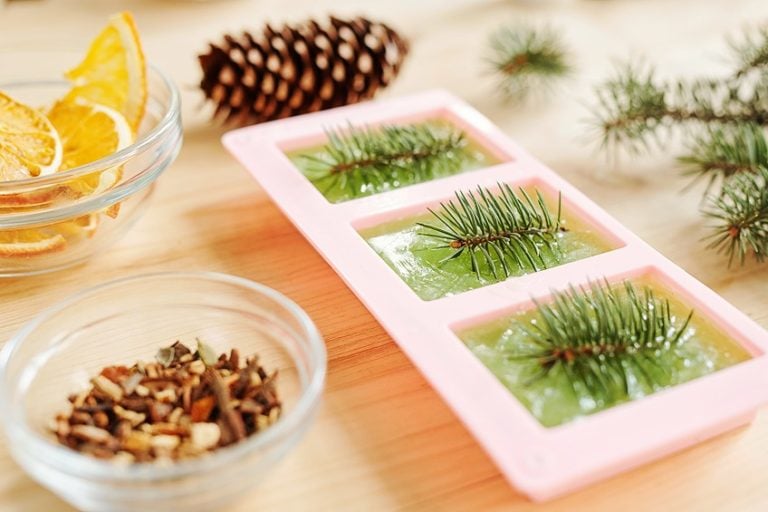Resin Color and Dye – How to Color Resin [Guide]
This post may contain affiliate links. We may earn a commission from purchases made through them, at no additional cost to you.
Casting resin / Epoxy Resin is very popular with many artists, do-it-yourselfers, and craftsmen because it can be colored and thus used for a variety of creative projects. One of the most attractive properties of resin is that it is transparent and crystal clear. However, there are also areas of application where it makes sense to color the casting resin. But which are the right colorants for this? In this article, you will find out everything you need to know.
What Kind of Resin Color Works?
In the specialized trade, a rather confusing number of different colors are available for handicraft purposes. But you just can’t use any color as a resin color. After all, some colors contain oil or water and thus distort the mixing ratio when mixing epoxy resin. Also, some paint products prevent the epoxy resin from hardening properly and can leave dull spots in the material. The light resistance of castings made of epoxy resin can also be affected by the use of unsuitable colorants. We recommend the following colorants for your resin projects:
Color Pigments for Epoxy Resin
With color pigments in powder form, epoxy resin can usually be colored very easily and effectively. High-quality color pigments should be dosed very sparingly, as they have a high coloring power. The exciting thing about powdered color pigments is that they often do not dissolve completely in the liquid resin. This results in slightly grainy color effects in the resin, which can be aesthetically quite appealing.
Epoxy Paint in Liquid Form
Liquid paint is particularly suitable as a colorant for epoxy resin because it is very easy to mix with the liquid resin. The liquid epoxy paint dissolves very evenly in it and ensures a homogeneous coloring of the casting resin.
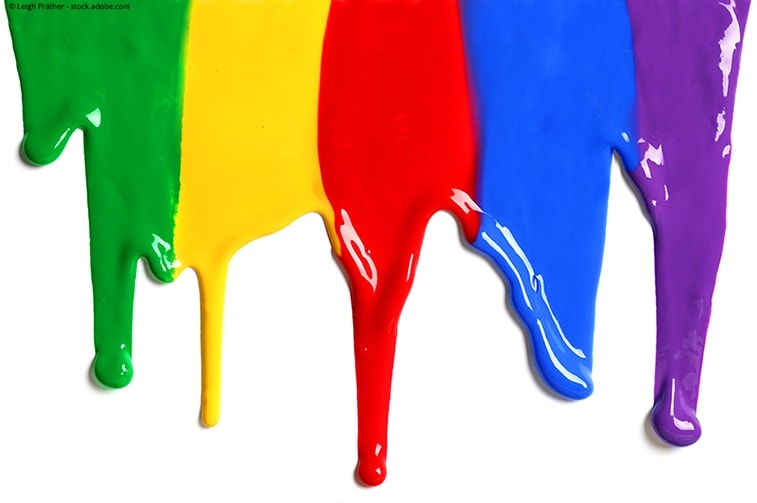
How to Color Resin?
In order to ensure that projects with epoxy resin are really successful, you should pay special attention and follow exactly the guidelines on recommended quantities of casting resin and hardener. If this mixing ratio is not adhered to exactly, unexpected difficulties in processing and curing can quickly arise. Now, of course, the composition of the mixture is slightly altered by the addition of color. You should, therefore, follow the below instructions for the procedure:
- In order not to impair the indicated mixing ratio more than necessary, you should use highly concentrated paints and pigments with high coloring power for the epoxy resin coloring.
- You should only use paints that do not contain water.
- Before using newly purchased epoxy paint for the first time, you should carry out a small test: For this purpose, you mix a small part of the resin mixture with the paint in a separate container in order to observe the reaction and to be able to make appropriate adjustments to the planned dosage.
- UV protection, which is very important as protection against yellowing, is not replaced by the coloring of the resin. It is, of course, the case that yellowing that occurs over time is less noticeable in colored epoxy resin castings than in crystal clear cast resin with an originally transparent structure.
- However, the lack of protection against UV light can lead to a change in color due to yellowing or fading, even with previously colored casting resin.
- For beginners, we recommend using uncolored resin for the first work with epoxy resin. This will allow you to get to know the special characteristics of this exciting craft material better, so that the correct dosage of the colors can be determined all the more easily.
Step by Step Instructions: How to Color Epoxy Resin
Just follow the steps listed below to color your resin aesthetically and with high quality without any problems:
- Before you start work, prepare all the materials you need, as you can easily run low on time during many epoxy work steps.
- Covering the work area with foil or cardboard prevents damage and makes cleaning easier afterward.
In order to avoid any damage to your skin or respiratory tract, we strongly recommend the use of protective clothing consisting of safety goggles, a suitable breathing mask and nitrile gloves that are as good as new. - Before coloring, resin and hardener must first be mixed in the correct ratio. The two components must first be well mixed before the desired coloring agents can be added.
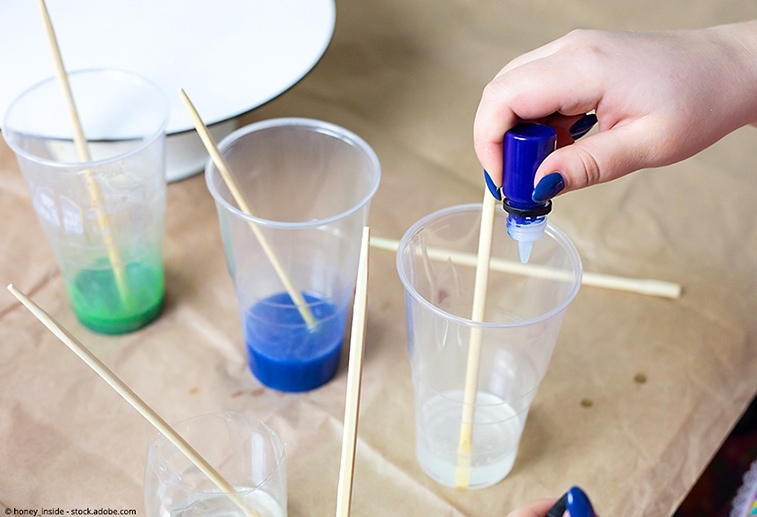
- Now add the prepared epoxy resin paint, measured according to the dosage, to the freshly mixed epoxy resin in the mixing vessel. In order not to add more paint than necessary, you should first mix a small part of the paint evenly with the casting resin mass. You can always add more paint in several rounds and mix it with the resin until you finally get the shade you want.
- When coloring, you should always keep in mind the rule of thumb that a color percentage of more than 5 percent of the total amount of the mixture could cause problems with the hardening of the resin. The mixing ratio of resin and hardener should not be unduly affected by the addition of color.
Our Recommendations: Liquid Epoxy Paint
Resin Dye
Various liquid paints are available on the market, which have been specially developed as paints for epoxy resin and its specific requirements. Compared to other colors, these are of course optimally suited for epoxy resin coloring. One of the best-known products of this type is the so-called ResinTint from ArtResin. This product not only meets the highest quality requirements but is also very economical to use. Products like this are in many cases based on a prepolymer. This is notable because epoxy resins also contain polymers and therefore the resin colors of this category can be mixed very well with the epoxy resins. These epoxy inks can also be used very well in combination with all kinds of casting resins and with the special UV resin:
Alcohol Inks
Normally, ink is actually produced based on water as the solvent used. However, there are also inks based on alcohol. In both cases, the ink contains color pigments in extremely high concentrations, so that when dyeing, just a few drops of these pigments are sufficient to dye a certain amount of epoxy resin. But you should be aware that alcohol inks are not very lightfast. That’s why there can be problems with resin projects for outdoor use if UV light hits the resin colored with alcohol ink for a long time. Alcohol inks are usually transparent and their color effect is particularly concentrated.
- Set of 24 different Alcohol Ink colors
- Alcohol Ink from Tim Holtz with a very high quality
- Suitable for Resin and Alcohol Ink techniques
- Brillant Alcohol Ink Set from T-REX
- 12 different colors in 20 ml jumbo size bottles
- Highly pigmented for all purposes
Airbrush Paint
The colors that are usually used for airbrush design techniques are also very suitable for epoxy resin coloring. However, in this area, you should not only pay attention to the price but rather choose reasonably high-quality products with a sufficient color concentration. We can recommend the Aero Color airbrush colors of the brand Schmincke.
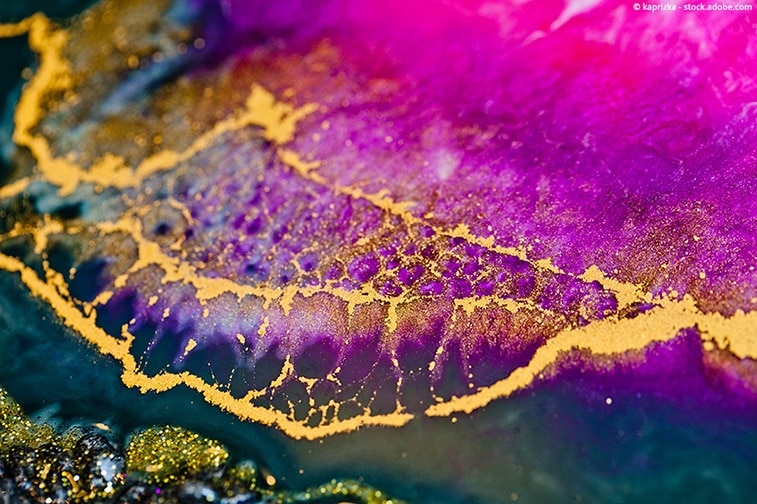
Our Favorites: Color Additives in Powder Form
Epoxy Pigment Powder
With regard to color pigments, a fundamental distinction is made between color powders on a natural basis and those made from synthetic materials. Inorganic color pigments of natural origin are, for example, dried and then very finely ground earth and minerals. In addition, there are numerous very different ways of producing synthetic-based color pigments.
The range of color pigments available in specialist shops has changed considerably over the past few years. The natural color pigments of many traditionally used mineral pigments were exhausted and therefore no longer available in the trade. Also, various inorganic-based color pigments were then also banned because they contained relatively toxic heavy metal compounds. The processing of these special color pigments was thus associated with corresponding health risks. These toxic color pigments or those that simply cannot be obtained in nature have now been completely replaced by equivalent products on a synthetic basis.
Color pigments are generally divided into different categories: for example, there is a wide range of different types of color pigments, from the matte, ordinary colors to the metallic shimmering color pigments. However, make sure that you choose color pigments with high light resistance for the casting resin coloring. These hardly bleach out at all and thus retain their original color in the long term. You certainly don’t want your laboriously produced works of art made of epoxy resin to lose their original color nuances after a short time. Therefore, when buying color pigments as epoxy resin paint, you will be better off keeping your hands off the cheap products of unknown brands. It is better to invest your money in the color pigments of proven manufacturer brands to protect yourself from unpleasant surprises.
Tip: When working with epoxy resin and color pigments, you should always wear high quality breathing protection. This will prevent you from inhaling the fine paint particles and protect your health from long-term consequential damage.
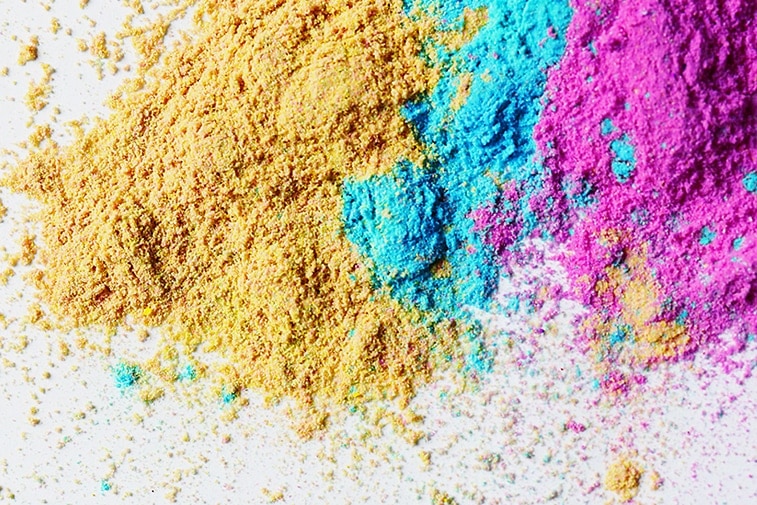
Luminous Pigments
If you use special luminescent pigments as paint for epoxy resin, you can use them to make it glow in the dark. There are two different approaches for this special effect: one type of luminous pigments is made to glow by so-called black light, while the other luminous pigments are first charged under UV light and then glow in the dark for several hours afterward.
Glitter Powder
Even with glitter powder you can create very cool optical effects. Here too, there is a large selection from simple metallic glitter to holographic glitter available in specialist shops. The glitter powder does not dissolve in the epoxy resin and does not color it. However, the glitter effect in the resin results in very beautiful effects with impressive optics.
Color Media NOT Suitable for Resin
Acrylic Paint
The acrylic paint, which is usually mixed with water, color pigments, and various binding agents, is also mixed with additives such as preservatives, depending on the product variant and brand. Therefore we want to warn you explicitly against the use of acrylic paint as epoxy paint. The water and additives in these paints can lead to unpredictable and also undesirable results when combined with epoxy resin. Also, when using acrylic paint, the surface of the castings is often matt and streaked. However, if there are no other colors at hand, a test with acrylic paints can at least serve to gain experience.
Oil Paints
Oil paints usually contain lipids, or fats, which make it impossible to mix the paint with the resin properly. Rather, the experiment would immediately lead to the formation of lumps which cannot be mixed.
Watercolors
Watercolors are also not really suitable for use in combination with epoxy resin. However, the reason here is not that the colors would not bond with the casting resin. Rather, they are simply much too weakly pigmented and would, therefore, be too weakly colored to be able to color epoxy resin. The amount of water-based paint required to achieve the desired coloring effect would be extremely large. In addition, the consistency of the paint would also make it very difficult or even impossible to mix epoxy resin and paint well together.
Frequently Asked Questions and Answers
Can Epoxy Resin Castings also be Lacquered with Color?
That’s quite possible. However, we strongly recommend the use of a high-quality two-component lacquer. Car paint, for example, is very well suited for this purpose. However, the results are usually better if the casting resin used is already colored before casting.
Some applications may also be more suitable for subsequent painting. Thus this variant makes sense, especially when building aquariums and terrariums. Even high-quality tables with resin content are often coated with a protective layer of lacquer after production.
What can Casting Resin be Colored with?
Casting resin is an epoxy resin with a relatively thin consistency. These can also be mixed with the above-mentioned color media without any problems and thus colored.

What can UV Resin be Dyed with?
In terms of color selection, the very special UV resin does not differ significantly from ordinary epoxy resin or so-called laminating resins. However, when coloring UV Resin you should also take care that you do not change the mixing ratio of the individual components too much by mixing the colors as carefully as possible.
What about the Heat Resistance of Colored Epoxy Resin?
As a rule, the epoxy resins available in specialist shops are temperature resistant up to temperatures between 70 and 100 degrees Celsius (158° – 212° Fahrenheit) without any problems. However, the exact value depends on the products used and the additives added. In some cases, mixed-in dyes and pigments can have a negative effect on the temperature resistance of the castings produced. For this reason, it can make sense to cover tables with colored epoxy resin with a protective layer of transparent epoxy resin before use.
Can Epoxy Resin also be Colored in White or Black?
In principle, there are also colors available for epoxy resin in black and white, but when colored with these colors, the resin does not become opaque in a way that would be the case if the surface was painted afterward.
Can Epoxy Resin Adhesive be Colored?
Epoxy resin adhesive can also be dyed relatively easily. However, you should take into account the processing time and assume that it may take a little longer for the adhesive to cure and dry completely.
How can Epoxy Resin be Colored as Transparent as Possible?
If the epoxy resin is not painted afterward, but colored before casting, it will always remain a little bit transparent. If a preferably transparent coloring should be explicitly desired, appropriate color pastes can be used for this purpose. You can also experiment with colors such as airbrush ink or printer ink for this purpose, in order to achieve relatively transparent results with a very small dosage.
How and for what should Pigments for Epoxy Resin Coloring be Used?
Pigments are generally characterized by increased UV resistance. They are therefore well suited for outdoor applications with the associated exposure to UV light. The disadvantage of the pigments, however, is that they cannot be mixed with the resin as homogeneously as other colorants.
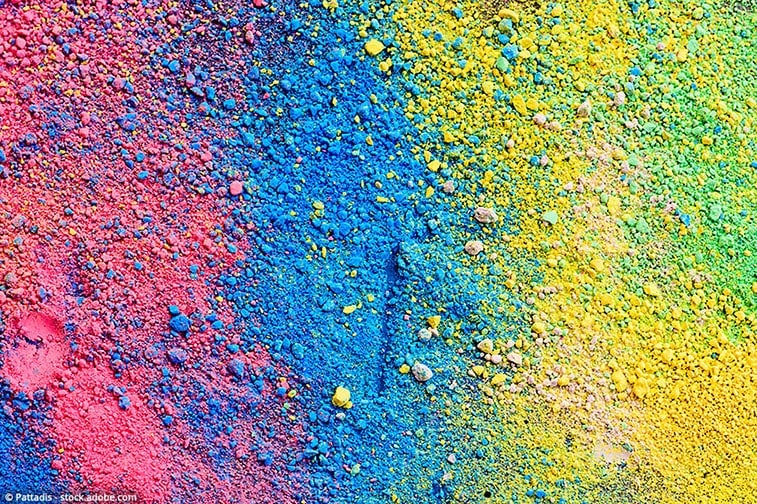
How to Dose the Colors Used for Coloring Epoxy Resin?
We have already mentioned above the rule of thumb that defines a value of 5% as an approximate limit. When using ArtResin it is now the case that the proportion of the dye in the mixed total quantity should not exceed a value of 6 % if possible. Higher percentages of dye would disturb the sensitive balance, which is essential for an undisturbed course of the chemical transformation processes during curing. However, we can assure you from our practical experience that in most cases you will probably stop the supply of paint well before the 6 % limit is reached. This is simply because the transparent epoxy resin can generally be colored satisfactorily with very small amounts of coloring agent.
Coloring the Epoxy Resin when Building Aquariums and Terrariums?
Colored and fully cured epoxy resin poses no danger to animals since after curing no dyes can be dissolved or washed out of the resin.
Can Epoxy Resin be Colored with Food Paint?
Unfortunately, the composition of food colors is not suitable for coloring epoxy resin. These colors would also not be lightfast.
Is it Possible to Color Epoxy Resin with Printer Ink?
In principle, this is conceivable, but even this ink is usually not very lightfast. Therefore, experiments of this kind should rather be limited to castings that will not be exposed to natural sunlight later on.
Larissa Meyer is a 32-year-old mother from Michigan and creative spirit since childhood. Her passion for painting and drawing has led her to an education as an illustrator and a career as a freelance graphic designer. She has a Bachelor of Fine Arts in Illustration and a degree in Graphic Design. Larissa is a talented artist who is able to master a wide range of styles and techniques to bring her artistic vision to life. Her greatest passion is currently fluid painting and epoxy resin art. As a mom of two kids, Larissa also understands the importance of fostering creativity in early childhood. She uses her experience and knowledge to help other parents inspire their children and develop their artistic skills as well.
Learn all about Larissa Meyer and Fluid Painting.















